The very idea of capturing a picture by reflecting an image onto a light-sensitive surface in order to create a more permanent image vs. simply creating a temporary reflection truly started to materialize in the early 19th century. Putting the two together happened by observing how reflections of an object could be “fixed” onto a surface, taking into consideration how long it took for that surface to absorb the amount of light being “exposed:” make the brights brighter, the darks more finite, with unlimited shades of grey in-between.
Around 1800, Thomas Wedgwood and Humphry Davy made the first attempt when they developed the Photogram, where an object is placed directly onto the light sensitive surface and then exposing it to light. This technique was used over time by individuals including Man Ray (calling them “rayographs”), photographer Imogen Cunningham, and artist Pablo Picasso because of its stark effect.
In the mid-1820s, Nicephore Niepce was the first to fix an image that was created using a camera, but it would take anywhere from eight hours to several days of exposure to obtain a result. Enter Niepce’s nephew, Louis Daguerre, who developed the daguerreotype process, the first commercially viable photographic process.
Starting in about 1839, photographers were able to use their cameras to expose an image on a light-sensitized silver-plated sheet of copper. The resulting image, taking 20-30 minutes to expose vs. hours or days prior to using this combination of metals with a more light-sensitive resin and a different post-exposure treatment, was a shimmery-silver reflection of what was placed before the lens. Because the lens reversed the image when projecting onto the metal sheets, pictures were typically reversed left-to-right – until photographers incorporated a mirror into the equation. The viewer would also have to tilt the photograph in order to create the right type of reflection to see the image.
Daguerreotypes were not cheap to obtain, typically costing a week’s wages for one. And, in order to keep still long enough to get the right exposure, photographers would often place iron stands or armrests behind the sitters to help them keep still. But more developments were on the way in a short amount of time.
Basically, these are glass negatives-turned-positives that cost less and took a shorter amount of time to expose. By 1851, ambrotypes had pretty much taken over the market.
Essentially, glass “plates” were coated with a light sensitive substance and then exposed, developing the image and dried. But, the image was a negative, not a positive image. The glass would then be mounted against a dark background or coated with a dark varnish, creating the illusion of a positive image.
Tintypes
Moving forward by two short years to 1853 and a type of “instant photo” was created. The tintype required the photographer to coat the material, expose the image onto it, and develop the image on-site. The image was then mounted on a thin sheet of black-enameled iron, not glass. This made these “super photos” unbreakable, and the ultra-thin iron was often assumed to be a piece of tin, hence the name “tintype.”
Tintypes were quick, easy, and inexpensive. Within just a few minutes, the customer walked out with a photo for just a penny or less. By the 1940s, tintypes cost about 25 cents.
In the late 1850s came the carte de visite – the first photograph able to be printed from a (glass) negative. At last, people were able to obtain multiple copies of photos of their loved ones and important events in history to share with everyone. The photograph is printed on to a thin piece of paper which is then adhered to card stock for stability. As a result, the sepia tone photo was born.
Cabinet Card
The Carte de Visite gave birth to the cabinet card: a larger, clearer, brighter image that was able to be created in sepia tone, silver, and black. With the larger version came additional craftsmanship to the card stock, often refined with scalloped edging and embossing.
These photos were made through the early 1900s, after which individuals were then able to start taking their own photos thanks to advancements in camera construction, portability, ease of use and the development of film. The age of modern photography had begun.

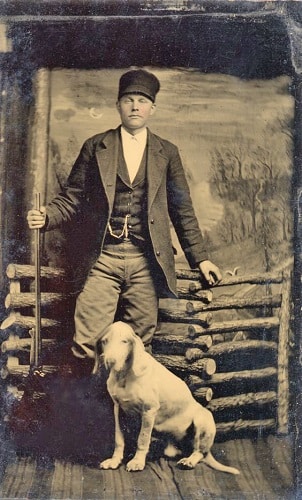
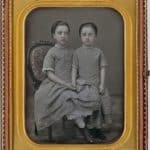
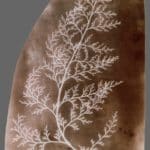

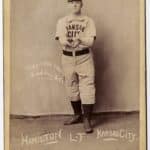
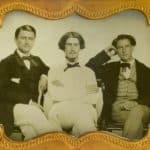
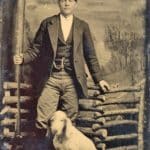



Related posts: